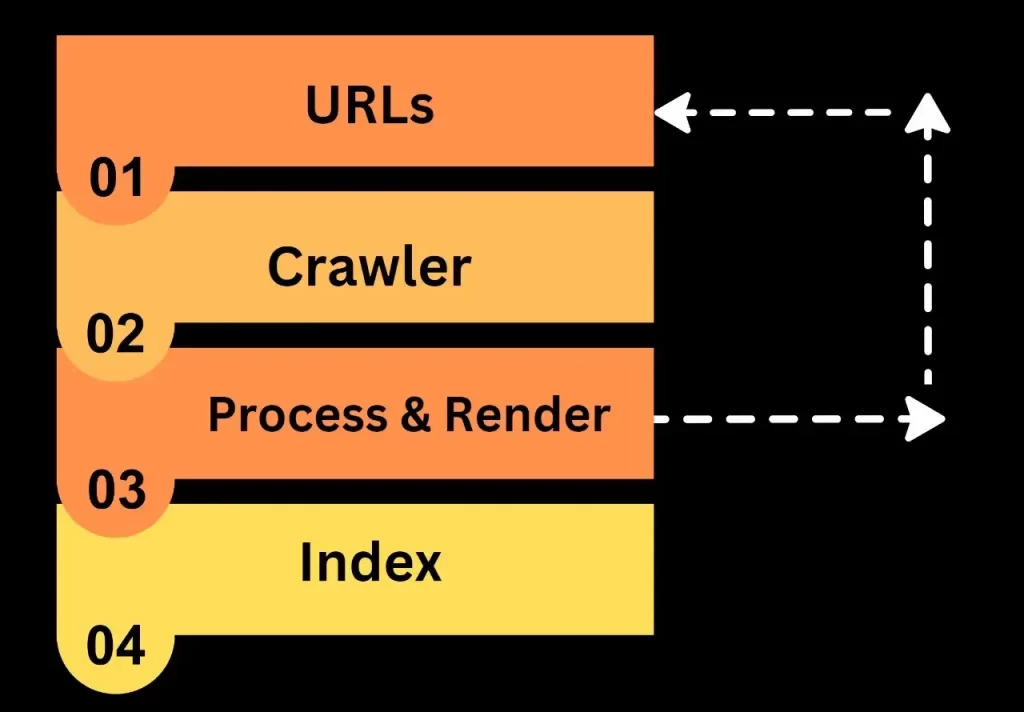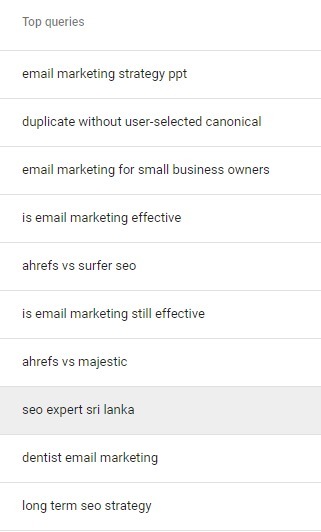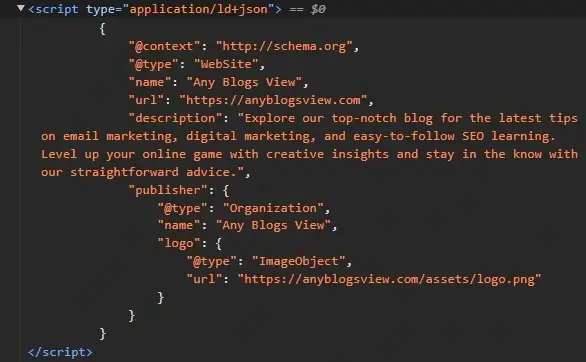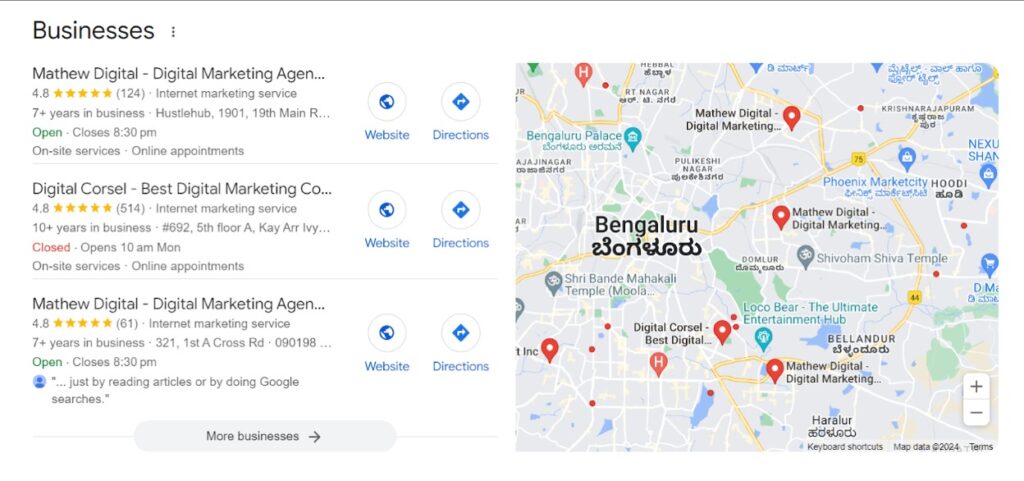Table of Contents
ToggleThis downloadable and printable SEO checklist covers everything from Keyword research to link building, making sure that you’ve got a solid base for SEO success. Make your efforts return to you in the form of success by downloading this PDF and keeping a check on each of your actions!
Just imagine, you put countless hours working on your website, going through and providing unlimited resources to build a beautiful website, but, just to watch it get lost in the vast web space and not seen by your target audience? That’s irritating, we understand. This is where SEO takes the lead.
SEO or, Search Engine Optimization is a set of actions or a practice of optimizing a website with the steps that make your website visible to your audience, bring organic traffic, and turn your visitors into paying customers. Eventually, this boosts your brand awareness and increases your reach.
These times, everyone has a unique goal but they all have something similar about it – boosting brand awareness. In the midst of this, having a strong online presence becomes important so that businesses of each kind and size do not lose their position. Here, SEO supports you by:
- Increasing Organic Traffic: Attracts more visitors without any paid advertisements.
- Enhancing Brand Visibility: Builds trust and credibility in the heart of your target audience.
- Improving User Experience: Makes your website easier to find, handle and navigate through.
- Outshine Your Audience: Give you a competitive edge to surpass your competitors.
We’re aware of how difficult it is to be on the right path when there are hundreds of ways to reach a goal but you’re not sure which one is the correct one. And so, we’ve created a detailed SEO checklist to guide you through it and succeed.
Fundamentals Of SEO
Search Engine Optimisation (SEO) is a practice implemented to increase the quality and quantity of traffic on your website just through the organic search results. In more simple words, it makes your website more visible and relevant on search engines like Google, Bing, and Yahoo.
It’s important to understand at least the basics of how a search engine works to understand SEO. Search engines function with the help of complex algorithms to crawl to web pages, index the content available, and then, rank them based on their relevance to the user’s needs.

SEO is known to have three main categories i.e.,
- On-Page SEO: It’s about optimizing the elements of the website, such as content, HTML, and site architecture.
- Off-Page SEO: It’s the practice that helps in building relationships and authority through backlinks and external signals. Basically, it works on elements that are not in your website’s control.
- Technical SEO: It is implemented to make the website’s foundation and functioning solid- easily accessible to search engines and users.
We’ll get to know more about these components in the coming sections.
One important this to note is, that user experience matters the most for search engines. It’s like one of the main goals of SEO to provide and enhance user experience. It’s a priority. Websites that offer a great user experience through fast page loading speed, mobile-friendliness of the website, and easy navigation are ranked higher than the websites that don’t.
Keyword Research: The Starting Point Of Your SEO Efforts
Keyword research is the beginning of building a successful website and so, it is the most important for any successful SEO strategy. It includes finding out words and phrases that people use to search for things like products, information, or services that you offer.
Have you ever played with a block and built a wall with it? These keywords are one of the blocks and the wall tends to be the successful SEO. Effective keyword research can help you understand the search intent of your target audience and craft and optimize your content accordingly.

There are two types of keywords; short tail and long-tail keywords. Short tail keywords are keywords with one or two words but have a search volume and competition; for example, “digital marketing.”
On the other hand, long-tail keywords are phrases of more than two words with specific intent to deliver, lower search volume and competition but, higher converting potential. Let’s take “Best Digital Marketing Agency For A Small Baking Business” as an example of this.
How about taking a look at some keyword research tools?
Google Keyword Planner
It’s a free keyword research tool provided by Google itself. As it is offered by Google, it provides with latest and updated keyword information and trends. It provides a list of keywords based on seed keywords, offers a monthly search volume of keywords, and, suggests keywords for PPC campaigns.
SEMrush
It’s a complete toolkit for SEO and marketing. You get a list of keywords in variations and related terms. It estimates the difficulty of ranking for some specific keywords and provides insights into the SERPs for any given keyword.
Ahrefs
It covers everything from on-page SEO to off-page SEO. It provides keyword suggestions, their search volume, and the difficulty level of those keywords. Analyses keywords according to the search filters. And, most importantly, helps you know the keywords that your competitors rank for!
Moz Keyword Explorer
It helps with keyword difficulty and opportunity analysis. It provides a straightforward metric to understand the competition for a keyword. It gives insights into top-ranking pages for any given keywords. Plus, it generated keywords relevant to the seed keyword given to it.
Once, we’re clear with the tools and and collecting potential keywords, the next step is analyzing them. These keywords are analyzed on the basis of their search volume, competition, and relevance to the audience and business goals.
Once you’ve found the keywords suitable for your business with the potential to boost your search visibility, assign them. Assign them where?
Use these keywords in content creation. Insert them into some specific web pages or content pieces on the website. This lets the search engine understand the topic and intention of each page of your website and increases the chances of ranking higher for those and the relevant keywords.
One thing to focus on is, to not stuff keywords blindly in the content just for the sake of it. It’s no longer a factor that determines your visibility but, affects your visibility negatively. So, use keywords naturally, at the required places. Focus more on creating content that’s valuable and informative enough to address the user intent.

On-Page SEO: Optimise Content To Be Found
On-page SEO is about optimizing all the elements that are in the control of your website and can be improved by putting efforts into it directly. It focuses particularly on making the content relevant, engaging, and easy for users and search engines to understand and eventually, increase the search ranks.
Title Tags
These are the headlines of the content you post on your website. It appears in search engine results and can be clicked on to get to the content. It should reflect the content available on the page and include the target keyword for being found.
Meta Descriptions
While meta descriptions directly don’t affect SEO ranks, they do indirectly. Meta descriptions are short summaries of the content and, are shown below the title tag. So, the more compelling and attractive it is, the more click-through rates you’re going to get.
Header Tags (H1, H2, H3,..)
Header tags are important to provide structure to the content and help the search engine understand the flow of content. The H1 tag is the main heading and then comes the H2, H3,…; these are the subheadings.
Using target keywords in the H1 tag and other subheaders makes it easy to find and understand.
Keyword Optimisation
Keyword optimization asks to place the keywords in the right places in the content. Strategically putting keywords all over the content improves the page’s relevance and is loved by users. Keyword density is no longer a factor in ranking.

So, instead of stuffing keywords, work on creating high-quality content that helps users find solutions to their problems.
Content Quality And Relevance
Content that’s high-quality, informative, and engaging is important for both, the users and the search engines. Content that answers user queries provides value helps your website be authoritative in your niche and is more likely to rank well for targeted keywords.
Image Optimisation
Image optimization is for images to be found through users and search engines. How? Using descriptive file names and alt text that has relevant content can help! Compressing images can help in improving the page speed without compromising quality.
Internal Linking

When one web page of a website is linked to another relevant web page of the same website, it is known as internal linking. This helps the search engines to discover new and updated content to index. It improved user navigation and distributed page authority all over the website.
URL structure
URLs are the addresses of each web page. If they’re wrong, or difficult to understand, you’re lost. Clear and descriptive URLs that include relevant keywords can save a lot of time! To make it easy for search engines to find and understand the page’s content, avoid long, complex URLs that have unimportant parameters.
By optimizing these on-page elements, one can improve their website’s performance, visibility, and search rankings.
Technical SEO: A Strong Foundation Confirmed
Having a strong technical SEO implemented is like having a strong website foundation that’s able to stand on its own and succeed. Let’s make it simple. Technical SEO is the “behind-the-scenes” of a website that affects search engine visibility. It helps search engines crawl to your website, understand it, and index it.
Mobile-Friendliness
With each passing day, people are getting forder of mobile phones than they ever were. With the mobile devices dominance, it’s important to adapt. A website that offers an enhanced mobile experience is prioritized by search engines such as Google.
Use a responsive design for your website to make it mobile-friendly and adapt to different screen sizes while being able to load quickly and offer easy navigation.
Page Load Speed
Page loading speed is crucial for getting users to come to your website. No one likes waiting now and so, if you’re making someone wait, they’ll skip. To prevent this from happening, optimize images, and minimize HTTP requests and browser caching to improve page load speed. Or, get ready to fall.
XML Sitemap

An XML sitemap is like a map of your website. It’s a roadmap for search search engines to understand your website. Through XML sitemaps, they’re able to discover new and updated pages that improve indexation.
Robots.txt

Robots.txt file is a file that stops search engines from crawling to a page. It instructs them to not visit or index those pages. Use it to prevent them from accessing certain areas of your website.
Structured Data

Have you heard of Schema Markup? Structured data or, schema markup, both of them are the same. It provides additional info about the content on your website to the search engines. You help them understand the context of your page and get your page’s rich snippets to appear on SERPs.
Crawl Budget
The crawl budget is the number of resources search engines have to go through to finally crawl to your site. It’s important to understand it for getting crawled to. Here, important pages should be prioritized and duplicate content should be avoided in order to make it effective and get crawled.
Canonical Tags
![]()
Canonical tags are the tags that prioritize the original content over any duplicate content. Canonical tags help in tagging the preferred version and keep the duplicated or similar content at a lower place or position. This impacts the search ranks.
Off-Page SEO: Building Authority To Dominate
Off-Page SEO is all the activities that takes place outside your website but, for the good of your website. It helps build the authority and credibility of your website and gets you a better rank on Search Engines.
Backlink Building
Getting high-quality backlinks from other highly authoritative and reputable websites to your own is called as backlink building. It’s like a thumbs up from other websites telling the search engines that you’re worth trusting and you provide value.
Some ways to get backlinks are by
- Guest posting on other high-quality websites
- Helping other website find their broken links and replacing them with yours
- Building relationships with other website owners, founders, influencers, and even some small websites to get backlinks from.
- Pitching to journalists for mentions and backlinks.
While these are just some ways to get backlinks, there are no limited ways to get one!
Content Marketing
Content marketing’s main function is to create consistent content that’s valuable and relevant – enough to attract and retain a particular audience. This helps in getting backlinks naturally, improving user experience, and getting more website authority.
One can do this by regularly publishing informative blogs, creating visual content like videos, using infographics to make it visually appealing, and ebooks and whitepapers to generate leads and build authority.
Social Media Marketing
Social media is a great way to promote brands and content. While social signals don’t affect your ranks directly, it does affect them by increasing the website’s visibility and engagement.
What can you do? Create appealing content for social media, build a strong following, and promote your content while encouraging others to share it as well.
Online Directories
Online directories play a great role in building authority. By submitting your business’s information online directories, you can improve local SEO visibility and the search engine’s ability to understand your business.
Don’t get confused, optimize your Google My Business listing and submit your business to other relevant directories as well.
Influencer Marketing
When you partner with individuals who are influencers or guide people in your industry to get your brand or product promoted, it’s influencer marketing. You get to reach the influencer’s audience and get new customers.
Some tips are, to find influencers who are particularly great at your brand’s niche, build a relationship with them, and collaborate with them on content or campaigns.
Online Reviews
When customers leave reviews, their words either encourage other people to reach you out or, avoid you at all costs. So, encourage your satisfied customers to leave a review on an online platform such as Google, Yelp, or any other relevant niche website.
The ways to get great reviews are simple- provide great service, encourage them, and respond promptly whether the review or positive or negative.
Once you implement these off-page SEO strategies, you can take a step closer to building a strong online presence, increasing the authority of a website, and eventually, improving search ranks.
SEO Analytics And Tracking: Measure Your Success
Now that you’ve put a lot of effort into SEO, what do you plan now? Obviously not to leave it here. So, the next and very important action to take is to track and analyze the SEO performance to ensure your success and informed decision.
Key Metrics To Keep A Check On
To analyse the performance of the website, fortunately, you don’t have to “just guess”, but, there are some metrics to look up to and get detailed information about the performance of your website.
They are:
- Organic Traffic
The amount of traffic; is the number of visitors coming from the search engine itself without any paid advertisements.
- Keyword Ranks
Here, you can track the ranks of your target keywords in the search results.
- Click-Through Rate (CTR)
This is the percentage of users who clicked on your website through the search results.
- Bounce Rates
It’s the percentage of users that left your web page just after looking at one page.
- Average Session Duration
The average time that a user spends on the website is called the average session duration.
- Conversion Rate
The percentage of users that visited your website and completed the desired action i.e., purchased, signed up, etc.
SEO Analytics Tool To Measure From
One more great thing, you can access so many tools to get to see these metrics and analyze them. They are called SEO analytics tools. While there are hundreds of options available on the internet, here are some well-known and great tools:
Google Analytics
It offers in-depth insights into user behavior, demographics, and user interaction. You get to see the conversion, online sales, and revenue, your overall website performance, and reports for specific data points to analyze.
Google Search Console
It shows you how your website actually appears in the search results. You can monitor the indexing status, find crawling issues, and check how your website performs on mobile devices. You get insights into website performance metrics.
SEMrush/ Ahrefs/ Moz
These tools find relevant keywords and the competition for them. They track backlinks, competitors’ analysis, and ranks of the targeted keyword. You can also find technical SEO errors on your website. Lately, you’re provided with deep insights into competitor’s strategies.
While Google Analytics and Google Search Console hold their unique places, the other tools like SEMrush, Ahrefs, and Moz offer advanced features and data which makes the more opted choice for in-depth SEO analysis.
Analyzing the website SEO data regularly helps in identifying trends, success, and areas of improvement on your website. You can also use all these insights to reshape your SEO strategy and optimize your website.
SEO Best Practices: Advancing The Game
SEO is continuously changing- into something better and something more unique. Staying updated is the best way to keep up with the latest practices, adapt, and save a place for long-term success. Some of the best practices are:
- Creating highly valuable, informative, and engaging content that answers user’s queries.
- Making user satisfaction a priority by improving page speed, mobile friendliness, and easy navigation.
- Making sure that your website is optimized with proper structure, for search engines to carl and index your website.
- Build high-quality links to more authority
- Optimize the website for local search to be found locally on the physical location.
- Make your website mobile-friendly to get the benefit of mobile-first indexing from Google.
- Keep an eye on performance metrics – the Core Web Vitals, to keep your website up to date.
These were some of the core SEO best practices performed by each kind of business to keep their website updated and smooth. Other than that, there are some ongoing optimizing practices performed regularly for effective results.
One of them this SEO auditing. It’s about regularly measuring the performance of the website to find the places that need improvement. Another practice is called keyword research. Continuous research keeps you updated with its rank, difficulty, and search volume to target and update the existing keywords.
Keywords are researched for content and so, content needs updates as well, Refreshing the existing content and updating it with the latest information keeps it relevant and engaging and improves ranks in SERPs.
To be known of what going on currently, algorithm updates should be followed regularly to be informed of the changes in the algorithm and adapt accordingly. Lastly, monitoring the analytics i.e., website performance metrics is crucial to track progress and make informed decisions.
These SEO practices help you stay informed and keep your website updated by continuously optimizing your website. It improves the website’s visibility and helps you achieve long-term success.
SEO Trends: Emerging Ways To Upscale
We just discussed how important it is to keep yourself updated to keep your website smooth and make informed decisions. To help you with it, here are some emerging trends you can adapt to give your website a competitive edge and rank higher.
Artificial Intelligence
AI is increasingly and quickly, taking over the internet. It understands search intent, processes information, and delivers relevant results to users. Tools that are integrated with AI are now helping generate content ideas, perform research, and even, draft the content.
It’s an emerging trend, that can be adapted, cautiously, to personalize search results and content recommendations according to user behaviors.
Core Web Vitals
Core Web Vitals have become the new necessity or, more necessary than ever before. It includes optimizing images, reducing HTTP requests, and making use of browser caching to improve the loading times.
Responsive designs should be used for smooth navigation and fewer delays while interacting. For this, avoid any layout shift or an unexpected content movement.
Voice Search
People these days use voice search to save their time and get results. Optimizing for voice search can bring attention to your website. Using a conversational tone in your content and including long-tail keywords can help you appear in voice searches.
Provide short and informative answers and optimize local search queries with the correct business information.
User Experience (UX)
User experience has always been the priority for search engines. In March, the core algorithm update made it more particular about how user experience can bring you up or down.
To give a positive user experience, make your website mobile-friendly, improve the page speed, offer easy navigation, and provide high-quality and engaging content that meets the user’s needs.
Local SEO

Local SEO helps your business to be found by your local audience and reach out to you. For this, optimize your Google My Business Listing With the correct information, photos, and reviews and include location-specific keywords in them.
With this, build citations on other online directories and claim and optimize your business listing on another relevant high authority directory as well.
E-E-A-T
E (Experience): Share personal stories, failures, achievements, and education to show your experience.
E (Expertise): Talk about your skills and expertise through your content. Provide in-depth information to prove your expertise in a particular niche or, industry.
A (Authoritativeness): Making a website a reliable source of information can help in building authority and emerge as an authoritative website.
T (Trustworthiness): Providing true, tactful, and reliable content can boost trustworthiness and build a solid reputation.
Video SEO
We are advised to create content in multiple formats, one of them is Video. But, now there’s a thing called video SEO. Have you heard it? Just like you implement SEO on your website to get it found, SEO on videos is implemented to work the same way- to attract.
For video SEO, use descriptive titles, descriptions, and tags for the video, and provide transcripts for the same to make it accessible. Secondly, create visually appealing thumbnails to grab attention and embed those videos on the website to have control over them.
Featured Snippets

Featured snippets are small paragraphs from a source of information that can be viewed directly without the need to open the website. For further information, the users can click on it and visit the website to get a detailed version. Featured snippets can significantly boost visibility.
To appear as a featured snippet, focus on providing direct and helpful answers to users’ common search queries. Moreover, use schema markup to increase the chances of appearing as a featured snippet.
BERT And Natural Language Processing
BERT and natural language processing aim to adapt content in the way that people search to appear in search ranks for their queries. Some steps towards it include offering detailed answers within the content without the need to click through. Secondly, aiming for position zero is the new trend to capture user attention.
All the SEO trends, once understood and implemented can help you stay ahead of the crowd, give you a competitive edge, and improve your website’s visibility.
Conclusion: A Strong SEO Foundation
Finally! How did it feel going through this detailed guide? By understanding and implementing the discussed and suggested principles, one can effectively build a strong foundation for their website for more visibility and organic traffic.
While we discussed every component, element, and step in detail, consistency, patience, focus, and experimentation are some more practices to make all your efforts give you fruitful results. With that, always stay updated with SEO best practices and algorithm changes to enhance your learning and growth.
So, combine all these elements, strategies, and practices; adapt to the new practices and be updated about the changes to improve your position on SERPs, enhance your website’s visibility, and attract more organic traffic.
We’ve created a checklist for you to keep an eye on your SEO efforts; claim it in PDF format here and boost your website’s performance! SEO Checklist PDF.

